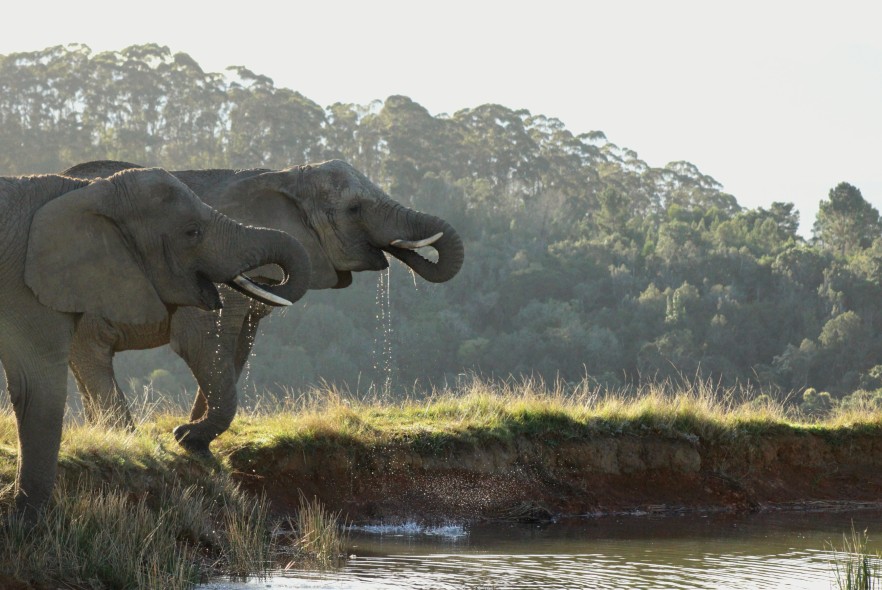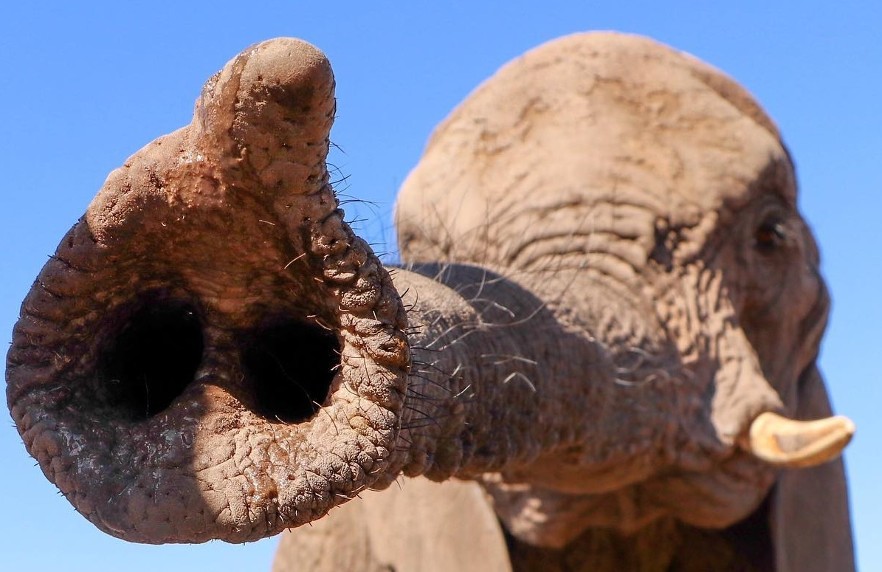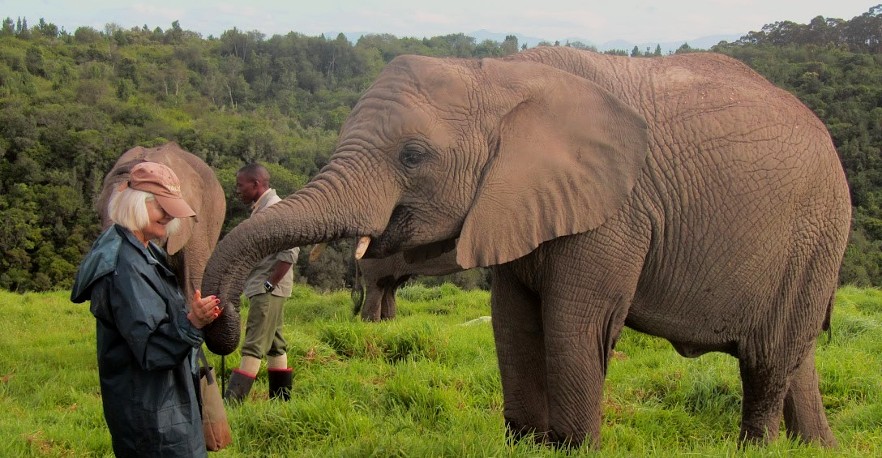How does an elephant’s trunk work?
Project & Pod News / 15 March 2024
Our volunteers at the Elephant Care and Research project get to be up close with magnificent elephants in a park reserve in South Africa. The research team at the project have written a brilliant blog about how an elephant’s trunk actually works – it’s more than just a hose for showers on a hot summer day!
The elephant's trunk is a remarkable organ that serves as a multipurpose tool for these majestic animals. Beyond its obvious role in smelling, touching, and grasping, the trunk plays a crucial role in breathing and drinking, thanks to its intricate anatomy and physiology.
Anatomy of the Trunk
At the core of the trunk's functionality is its muscular structure.
How many muscles are there in an elephants trunk? There are over 150,000 individual muscle units, arranged in longitudinal, oblique, and radiating groups. This muscular arrangement allows for an incredible range of motion and strength, enabling elephants to perform tasks with precision and control.
The trunk is also lined with small, finger-like projections called villi, which increase the surface area and enhance its sensory capabilities. These villi contain numerous nerve endings, making the trunk highly sensitive to touch, pressure, and temperature.

Physiology of Drinking
One of the trunk's most impressive feats is its ability to drink. Elephants use a combination of muscular contraction and relaxation to create suction, drawing water into their trunks.
How much water can an elephants trunk hold? The trunk's muscular walls can hold up to 8.5 litres of water, allowing elephants to take in large amounts in a single gulp.
Once water is sucked into the trunk, it can be transferred directly into the mouth for swallowing. However, elephants also have a unique adaptation known as a pharyngeal pouch, located at the base of the trunk. This pouch allows them to store water for later use, such as for bathing or cooling off in hot weather. When needed, the elephant can contract the muscles around the pouch to release the stored water. This storage ability is crucial in arid environments where water sources may be scarce.
Physiology of Breathing
Do elephants breathe through their trunks? Yes! In addition to drinking, the trunk also plays a crucial role in breathing. Elephants inhale air through their trunks, which is then passed through the nasal passages to the lungs. The trunk's ability to expand and contract allows elephants to take in large volumes of air, essential for their massive size and metabolic needs.
The elephant's trunk is a true marvel of nature's design. Its intricate anatomy and physiology allow elephants to perform a wide range of tasks with precision and efficiency. Whether drinking, breathing, or grasping, the trunk is a testament to the adaptability and ingenuity of these magnificent animals.

Where can I volunteer with elephants?
Join one of our teams around the world where you can learn about elephant care, behaviour and social structures - we have elephant volunteering projects in Cambodia, Namibia, Sri Lanka, South Africa and Thailand. Pack up your own trunk and join one of our unforgettable elephant projects!







